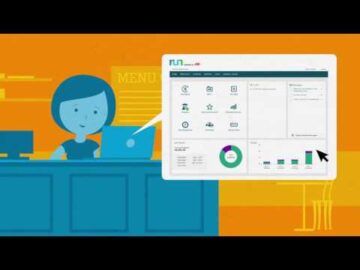
AT&T clearly defines its bank debt that is maturing in less than one year under current liabilities. For a company this size, this is often used as operating capital for day-to-day operations rather than funding larger items, which would be better suited using long-term debt. Assets and expense accounts are increased with a debit and decreased with a credit. Meanwhile, liabilities, revenue, and equity are decreased with debit and increased with credit. Cash is increased with a debit, and the credit decreases accounts receivable.
A capital lease refers to the leasing of equipment rather than purchasing the equipment for cash. We believe everyone should be able to make financial decisions with confidence. We follow ethical journalism practices, which includes presenting unbiased information and citing reliable, attributed resources. Much of our research comes from leading organizations in the climate space, such as Project Drawdown and the International Energy Agency (IEA). The articles and research support materials available on this site are educational and are not intended to be investment or tax advice.

As long as the total dollar amount of debits and credits are equal, the balance sheet formula stays in balance. The journal entry includes the date, accounts, dollar amounts, and the debit and credit entries. You’ll list an explanation below the journal entry so that you can quickly determine the purpose of the entry. Accounts payable liability is probably the liability with which you’re most familiar. For smaller businesses, accounts payable may be the only liability displayed on the balance sheet.
Accounting tools can make all the difference
Notes payable is similar to accounts payable; the difference is the presence of a written promise to pay. A formal loan agreement that has payment terms that extend beyond a year are considered notes payable. When using accrual accounting, you’ll likely run into times when you need to record accrued expenses. Accrued expenses are expenses that you’ve already incurred and need to account for in the current month, though they won’t be paid until the following month. The expense account is the last category in the chart of accounts.
This means that debit entries are made on the left side of the T-account which decrease the account balance, while credit entries on the right side will increase the account balance. The natural balance of a liability account is a credit, so any entries that increase the balance of a liability account appear on the right side of the journal entry. Conversely, a debit reduces the balance of a liability account.
Debit vs. credit accounting: The ultimate guide
Liabilities are one of 3 accounting categories recorded on a balance sheet, which is a financial statement giving a snapshot of a company’s financial health at the end of a reporting period. Accrued Expenses – Since accounting periods rarely fall directly after an expense period, companies often incur expenses but don’t pay them until the next period. The current month’s utility bill is usually due the following month. Once the utilities are used, the company owes the utility company.
Both cash and revenue are increased, and revenue is increased with a credit. The Ascent is a Motley Fool service that rates and reviews essential products for your everyday money matters. Mary Girsch-Bock is the expert on accounting software and payroll software for The Ascent. Unearned revenue is money that has been received by a customer in advance of goods and services delivered. Check your financial health score to get a more detailed look at your spending and saving habits and find out how you can improve.
Current (Near-Term) Liabilities
Liabilities must be reported according to the accepted accounting principles. The most common accounting standards are the International Financial Reporting Standards (IFRS). However, many countries also follow their own reporting standards, such as the GAAP in the U.S. or the Russian Accounting Principles (RAP) in Russia.
The AT&T example has a relatively high debt level under current liabilities. With smaller companies, other line items like accounts payable (AP) and various future liabilities like payroll, taxes will be higher current debt obligations. Considering the name, it’s quite obvious that any liability that is not current falls under non-current liabilities expected to be paid in 12 months or more.
Balance sheet critics point out that it is only a snapshot in time, and most items are recorded at cost and not market value. But setting those issues aside, a goldmine of information can be uncovered in the balance sheet. Current liabilities are liabilities owed by a company to a lender for 1 year or less.
The long-term debt ratio
The third party to which the obligation must be paid (such as a supplier or lender) is known as the creditor. Companies will segregate their liabilities by their time horizon for when they are due. Current liabilities are due within a year and are often paid for using current assets. Non-current liabilities are due in more than one year and most often include debt repayments and deferred payments.
- Now, you see that the number of debit and credit entries is different.
- Most accounts payable items need to be paid within 30 days, although in some cases it may be as little as 10 days, depending on the accounting terms offered by the vendor or supplier.
- When a company deposits cash with a bank, the bank records a liability on its balance sheet, representing the obligation to repay the depositor, usually on demand.
- Learn more details about the elements of a balance sheet below.
- Although the recognition and reporting of the liabilities comply with different accounting standards, the main principles are close to the IFRS.
- A constructive obligation is an obligation that is implied by a set of circumstances in a particular situation, as opposed to a contractually based obligation.
If you’ve promised to pay someone a sum of money in the future and haven’t paid them yet, that’s a liability. If you’re unhappy with your net worth figure and believe liabilities are to blame, there are steps you can take. Strategies like debt consolidation and the “debt avalanche” — attacking debts with the highest interest rates first — can help you pay off debt efficiently. No matter how much debt you have or what kind, make sure you have a plan in place to pay it down — the sooner, the better.
Accounts Payable
Assets on the left side of the equation (debits) must stay in balance with liabilities and equity on the right side of the equation (credits). Your decision to use a debit or credit entry depends on the account you’re posting to and whether the transaction increases or decreases the account. As your business grows and you take on more debt, it becomes even more important to understand the difference between current and long-term liabilities in order to ensure that they’re recorded properly. Both income taxes and sales taxes need to be properly accounted for. Depending on your payment schedule and your tax jurisdiction, taxes may need to be paid monthly, quarterly, or annually, but in all cases, they are likely due and payable within a year’s time. If you have a loan or mortgage, or any long-term liability that you’re making monthly payments on, you’ll likely owe monthly principal and interest for the current year as well.
Real Estate Developer Sentenced for Investment Fraud, Bank Fraud … – Department of Justice
Real Estate Developer Sentenced for Investment Fraud, Bank Fraud ….
Posted: Mon, 31 Jul 2023 20:30:14 GMT [source]
Besides his extensive derivative trading expertise, Adam is an expert in economics and behavioral finance. Adam received his master’s in economics from The New School for Social Research and his Ph.D. from the University of Wisconsin-Madison in sociology. He is a CFA charterholder as well as holding FINRA Series 7, 55 & 63 licenses. He currently researches and teaches economic sociology comparative balance sheet and the social studies of finance at the Hebrew University in Jerusalem. Watched in horror more than two years ago as a riot descended on Capitol Hill, the mob raiding offices, menacing lawmakers, and fighting hand-to-hand combat with police. The top leadership of both chambers followed evacuation protocols to make sure their branch of government wouldn’t be decapitated.
Under this column, the difference between the debit and the credit is recorded. If the debit is larger than the credit, the resultant difference is a debit, and this is listed as a numerical figure. If the credit is larger than the debit, the difference is a credit, and this is recorded as a negative number or, in accounting style, a number enclosed in parenthesis, as for example (500). Thus, if the entry under the balance column is 1,200, this reflects a debit balance.
Vice President Mike Pence was pinned down and forced to hide at a loading dock while White House aides unsuccessfully lobbied Trump to direct his legion of followers to stop terrorizing democracy. Partisanship fades when Hill staffers talk about that day, even if many of their bosses have publicly retreated from prior criticism of Trump and sought to shade the painful facts. It was a day a lot of the folks who experienced the attack in Washington on Jan. 6 had been seeking for a long time.
In the case of non-payment creditors has the authority to claim or confiscate the company’s assets. Even in the case of bankruptcy, creditors have the first claim on assets. This can either be raised through equity (Issuance of shares on the stock exchange) or debt (Obtained from banks or issuance of bonds). If one of the conditions is not satisfied, a company does not report a contingent liability on the balance sheet. However, it should disclose this item in a footnote on the financial statements. Whenever a business records an obligation in a liability account, it is known as the debtor.
United Kingdom Corporate Criminal Liability – The National Law Review
United Kingdom Corporate Criminal Liability.
Posted: Wed, 02 Aug 2023 01:52:39 GMT [source]
If a portion of a long-term debt is payable within the next year, that portion is classified as a current liability. While accounts payable and bonds payable make up the lion’s share of the balance sheet’s liability side, the not-so-common or lesser-known items should be reviewed in depth. For example, the estimated value of warranties payable for an automotive company with a history of making poor-quality cars could be largely over or under-valued. Discontinued operations could reveal a new product line a company has staked its reputation on, which is failing to meet expectations and may cause large losses down the road. The devil is in the details, and liabilities can reveal hidden gems or landmines. Expenses and liabilities should not be confused with each other.
